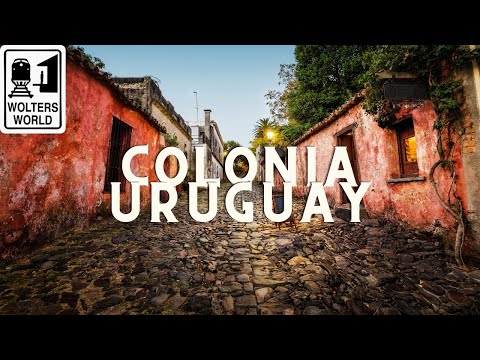
Nestled on the southwestern shores of Uruguay, facing the broad expanse of the Rio de la Plata, lies Colonia del Sacramento. Commonly known as Colonia, this small city is a gem steeped in history and old-world charm, recognized by UNESCO as a World Heritage Site in 1995. Its unique blend of Portuguese, Spanish, and post-colonial styles makes it one of Uruguay’s most picturesque and visited locales. Here’s what you can discover in this enchanting city.
### Barrio Histórico (Historic Quarter)
At the heart of Colonia’s allure is its Barrio Histórico. Walking through this area feels like stepping back into a time capsule. The streets are paved with cobblestones, flanked by buildings that date back to the 17th century. The historic quarter’s layout is a quaint mix of winding streets and colorful houses, reflecting its dual heritage — a rare urban landscape where Portuguese and Spanish architectural influences intermingle seamlessly.
### The Street of Sighs (Calle de los Suspiros)
One cannot talk about Colonia without mentioning the iconic Calle de los Suspiros or Street of Sighs. This narrow, cobbled lane, bordered by old houses with faded facades and wooden balconies, is wrapped in legends. One tale suggests that it was the last walk for prisoners condemned to death by drowning as they were led down to the river. Today, it’s one of the most photographed sites in Colonia.
### Lighthouse and Convento de San Francisco
For the best panoramic views of Colonia and beyond, climb up the 118 steps of its 19th-century lighthouse located near the ruins of Convento de San Francisco which was originally built in 1683 but destroyed by fire later on. From here you can see across to Buenos Aires on a clear day and get a bird’s-eye view of the entire town and its surroundings.
### Basilica del Santísimo Sacramento
This basilica is not only an active place of worship but also an architectural landmark that represents Colonia’s rich religious heritage. Originally built by Portuguese settlers in 1680, it has undergone numerous renovations but retains much original charm with its stone walls giving off an aura of ancient solidity intertwined with spiritual peace.
### Plaza Mayor 25 de Mayo
Surrounding areas around Plaza Mayor are filled with museums like Museo Portugués and Museo Español which showcase artifacts from both colonial powers that ruled over this region at different times. The plaza itself serves as a gathering space surrounded by lush greenery offering visitors respite under shady trees after exploring nearby attractions.
### Cultural Events & Gastronomy
Colonia does not just captivate with its architecture; it is also alive with cultural events throughout the year such as jazz festivals and traditional celebrations that reflect Uruguayan culture prominently influenced by both Spain and Portugal.
Gastronomically speaking, local cuisine includes delightful dishes such as ‘Asado’ (barbecue), seafood platters featuring fresh catches from Rio de la Plata paired beautifully with renowned Uruguayan wines.
### Day Trips around Rio De La Plata
Besides exploring Colonia itself there are many opportunities for day trips along Rio De La Plata whether it’s visiting tranquil beaches or taking boat rides exploring nearby islands providing more opportunities for adventure seekers looking beyond historical exploration into nature excursions or leisure activities like fishing or bird watching depending on personal interests.
In essence, visiting Colonia del Sacramento offers more than just sightseeing—it offers an immersive experience into history intertwined uniquely between two dominant colonial cultures evident through every street walked upon or building observed leading visitors on an unforgettable journey through time preserved within these UNESCO protected boundaries making it truly one special destination worth adding onto any travel itinerary when visiting South America particularly Uruguay.
